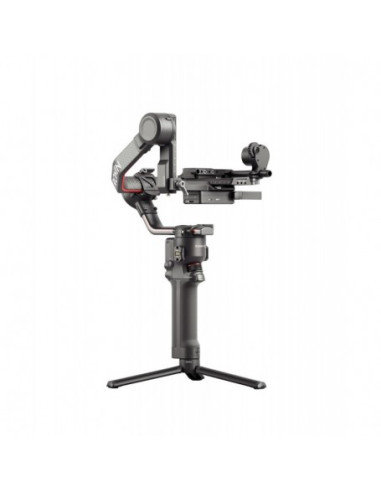The RS 2 stabiliser in the DJI Ronin range stands out from the rest thanks to its premium finish. Made from carbon fibre, a material renowned for its lightness and robustness, the RS2 has a colossal power-to-weight ratio. Its nacelle alone weighs just 1 kg, while it can carry a payload of up to 4.5 kg. On top of that, its motors are 20% more powerful than those of the Ronin-SC, for even greater stability. It has one of the most efficient batteries to date, the BG30, a 4S LiPo battery, which allows the Ronin to be used for up to 12 hours fully recharged. With a 24W charger, 15 minutes of power will allow you to use the Ronin for 2 hours...
It's been designed to be simple to use, but still technically sound: you can easily adjust it to suit your needs, either physically, using the intuitive levers and gears (you quickly understand what each adjustable element does), or via the 1.4-inch screen, which lets you set travel speeds or activate certain functions such as Active Track 3.0.
The RS 2 incorporates the Titan algorithm, which is the basis of its operation. This algorithm uses a gyroscope to calculate the camera's position in space in real time. In addition, it can be combined with the elements filmed by the camera to stabilise the image around a target, or to make it carry out precise movements. For an even more advanced stabilisation experience, DJI has decided to add another feature to Titan: SuperSmooth. As the name suggests, with this feature, you push the limits of stabilisation once again. Compatible with 100mm lenses, your images are stabilised even more strongly thanks to a mix of digital and physical stabilisation. This is an extremely effective feature for films taken from a surface vibrating at a very high frequency, with a relatively low amplitude of vibration and movement. Examples include the RS 2 attached to a car moving at high speed on tarmac, or the vibrations generated by the wheels of a skateboard.













